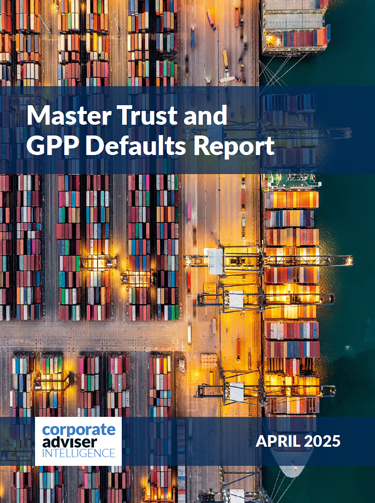[SPONSORED CONTENT]
One of Donald Trump’s first actions when he entered the White House in January 2025, was the confirmation of his intention to withdraw from the Paris Climate Agreement.
The process itself will take a year, at which point the US will join Iran, Libya, and Yemen as the countries standing outside the global agreement.
What is the Paris Agreement?
The Paris Agreement united 193 nations and the European Union to address climate change. With effect from November 2016, the nations agreed:
- To ‘pursue efforts’ to keep global temperature rises ‘well below’ 2.0oC above pre-industrial levels, striving to limit them to 1.5oC.
- To achieve net zero between 2050 and 2100.
- To set industrial emissions reduction targets to be reviewed every five years.
- That richer countries would provide funding support to help poorer countries adapt.
What has the response been to the US withdrawal?
Twenty-four US states have separately confirmed their continuing commitment to the climate agreement in the wake of President Trump’s announcement.
Globally, too, many countries announced their continued support for climate action, despite understandable dismay that the world’s largest economy (and one of the biggest emitters of greenhouse gases) is withdrawing. EU President von der Leyen, for example, stated that:
“Climate change is still on top of the global agenda. From decarbonising to nature-based solutions. From building a circular economy to developing nature credits. The Paris Agreement continues to be the best hope of all humanity. So, Europe will stay the course and keep working with all nations that want to protect nature and stop global warming.”1
Where are we now with climate change?
2024 was officially the hottest year on record. Global mean temperatures were more than 1.5°C above the pre-industrial average according to the World Meteorological Organization. This doesn’t constitute a breach of the limit set by the Paris Agreement, because long-term warming over decades still remains below 1.5°C. For example, between 2014 and 2023, estimated to be the warmest decade on record, temperatures were around 1.2°C above the 1850-1900 level. But it is a worrying sign. On the current path, the 1.5°C limit is set to be breached in the early 2030s.2
While many believe the prospect of limiting temperatures to 1.5°C is now very unlikely, limiting warming to well below 2.0oC remains within reach and is in line with the original goal of the Paris Agreement. Every increment of warming matters and the impacts of climate change progressively worsen with each increase in warming.
If President Trump follows through on his promises to not only withdraw the US from the Paris Agreement, but to actively pursue increased fossil fuel use, as well as withdrawing permits for offshore and onshore wind projects, there could be significant implications for emissions in the US.
The physical impacts of our changing climate are clearly visible, and climate change is contributing to a growing number of human, natural and economic disasters. According to the United Nations, the US is actually one of the biggest casualties, with “the bulk of global economic losses from weather, climate and water-related hazards. It has sustained 403 weather and climate disasters since 1980 where overall damages/costs reached or exceeded $1 billion. The total cost of these 403 events exceeds $2.915 trillion”.3
Broader impacts
Many argue that the world is a very different place now from 2017 when Trump previously withdrew the US from the Paris Agreement, and that the transition to a low carbon, greener economy is already underway. And yes, global renewable capacity, for example, is expected to grow by 2.7 times by 2030.4 However, much of that growth is set to be driven by the US, with pre-Trump forecasts of renewable capacity doubling between 2024 and 2030.
With China set to become the global renewables leader, the US also risks falling behind in a world that’s embracing climate solutions and green technology. Losing its competitive edge could have significant economic costs for the US while potentially creating opportunities for other regions.
Why responsible investment still matters
While some financial institutions and asset managers may follow the prevailing political headwind in the US and pull back from net zero initiatives, ultimately the pursuit of net zero should be non-negotiable, as without that, warming will continue. When we will achieve net zero will determine the temperature that warming would stabilise at. That’s why striving to continue to support the goals of the Paris Agreement and working towards the ultimate goal of net zero is critical. And it’s why we are reiterating our commitment to the Paris Agreement.
Climate change presents both a material risk for investors and potential opportunity. Risk comes in the form of damages to business profitability, for example, through exposure to increasing costs of raw materials, carbon prices and regulation, disruption to supply or trade routes, or the direct consequences of flood, fire, or extreme weather events. Risks to infrastructure, economic stability and global growth could also impact investment values.
There are opportunities too, for example in net zero technologies, and in the infrastructure and raw materials needed to transition successfully. Businesses may also find efficiencies in waste reduction and energy saving, and benefit from meeting the needs of people who are increasingly concerned about sustainability.
Investing pension savings responsibly is about creating more resilient portfolios that aim to manage the risks and help leverage the opportunities that environmental, social and governance (ESG) factors can present.
References
1. ‘Special Address by President von der Leyen at the World Economic Forum,’ 21 January 2025.
2. ‘State of the Climate 2024 Update’, World Meteorological Organization, 11 November 2024.
3. ‘UN regrets US exit from global cooperation on health, climate change agreement’, United Nations, 21 January 2025.
4. ‘Renewables 2024’, International Energy Agency, October 2024.





